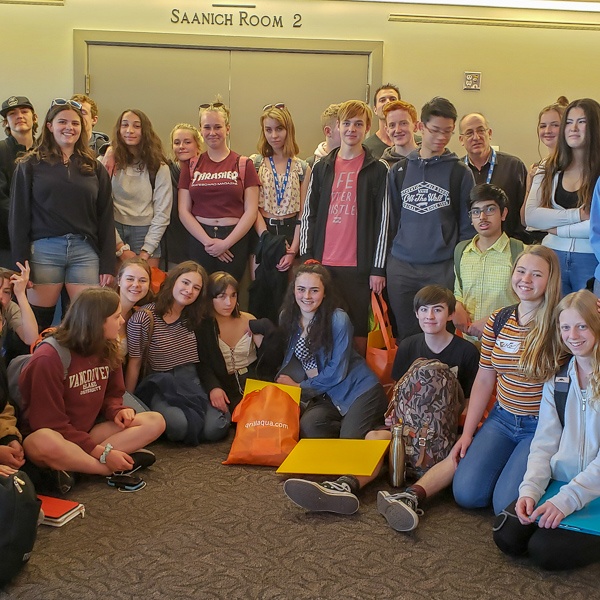Leading a class-act in aquaculture
Aquaculture in the Classroom project connects high school students to real-life experiences and industry professionals.
By Samantha McLeod
SeaWestNews
Connecting today’s youth to the tomorrow of British Columbia is a passion for Dr. Myron Roth and Pat Tonn.
Together they run a class-act called Aquaculture in the Classroom to immerse high school students in real-life experiences and interact with industry professionals.
“Our perspective is that maybe students don’t know about growing food… so if we start from the ground up with basic education then we can give that information to young students and they can make educated decisions,” said Pat Tonn, executive director for Agriculture and Aquaculture in the Classroom.
Tonn, a former school teacher is a veteran of the BC Ministry of Agriculture’s youth leadership program.
“The response from the students has been rewarding, they really enjoy the tours and they do ask a lot of tough questions,” said Dr. Myron Roth, aquaculture and seafood industry specialist with the Government of British Columbia.
The Aquaculture in the Classroom project is a collaborative initiative created by Dr. Roth, with funding by Vancouver Island University, Taplow Feeds, the Aquaculture Association of Canada, and the B.C. Ministry of Agriculture.
“For example, when we were in Nanaimo we had culinary students, and here today, the students are in resource and environmental stewardship programs,” said Dr. Roth after he and Tonn led a group of Victoria-area high school students to the 2019 Aquaculture Canada Conference last week.
The excursion included a tour of Metchosin Aquaponics.
“The people at Metchosin Aquaponics really get it and the kids really associated with that,” said Dr. Roth.
“The hatchery manager, today, when the students asked her why she did what she does her response was…I just love fish!” said Dr. Roth, adding the high school students relate to these kind of interactions better than learning from scientists and experts.
“The cool thing was they started asking questions that weren’t on the questionnaire, so right off the bat it was quickly obvious that their curiosity was triggered.”
The students were also given a twenty-minute orientation about B.C.’s Aquaculture industry, and learned how aquaculture and aquaponics are done around the world.
Angelique Pichette of Grieg Seafood was also helping guide the students.
“Working with the environment to try and make it better and have little impact to make sure there’s fish in the ocean for everyone,” she told the students when asked what’s the highlight of her career.

The Youth Development program works in conjunction with 4-H British Columbia to deliver agriculture and aquaculture education and training to young British Columbians, ages 6-25.
The 4-H program has over 2,300 youth members and over 600 volunteer leaders across the province who participate in hands-on education, leadership and career training opportunities. The Youth Development program also partners with other organizations on special projects focused on agriculture and aquaculture education.
RELATED LINKS:
“The future of protein is here and it’s called aquaculture”
